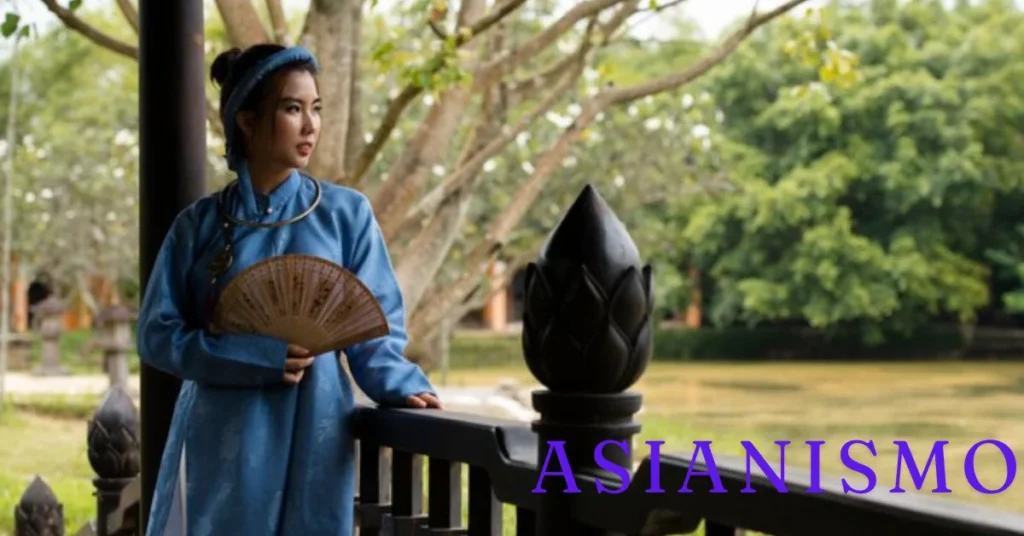intriduction of asianismo
Welcome to a journey of cultural enlightenment and self-discovery as we delve into the captivating world of Asianismo. This ancient philosophy rooted in Asian traditions offers a gateway to a deeper understanding of oneself and the world around us. Join us as we explore the essence, history, and impact of Asianismo on modern society, inviting you to embrace the beauty and wisdom that these age-old practices have to offer.
Defining Asianismo and its importance
Asianismo, a term derived from the rich cultural heritage of Asia, encompasses a holistic approach to life that emphasizes harmony and balance. At its core, Asianismo encourages individuals to connect with their inner selves and find peace amidst the chaos of daily life. This philosophy values mindfulness, respect for nature, and the interconnectedness of all living beings.
Embracing Asianismo allows us to cultivate a sense of tranquility and mindfulness in our interactions with others and the world around us. By acknowledging the importance of traditions passed down through generations, we honor our roots and gain insight into timeless wisdom that transcends boundaries.
In today’s fast-paced society, where stress and distractions abound, incorporating elements of Asianismo can provide a much-needed anchor for grounding oneself in moments of uncertainty. By tapping into these ancient teachings, we can navigate life’s challenges with grace and resilience.
The history and origins of Asianismo
Asianismo, stemming from the rich tapestry of Asian cultures, has deep historical roots that date back centuries. The term itself encapsulates the essence of embracing and celebrating diverse Asian traditions. From the ancient philosophies of Buddhism and Confucianism to traditional practices like tea ceremonies and martial arts, Asianismo embodies a profound connection to heritage.
The origins of Asianismo can be traced to the Silk Road, where cultural exchange flourished between East and West. As civilizations interacted along these trade routes, ideas were shared, leading to a blending of customs and beliefs. This cross-cultural pollination laid the foundation for what we now recognize as Asianismo.
Throughout history, various dynasties in China, kingdoms in Korea, empires in India, and shogunates in Japan have contributed to shaping the principles that underpin Asianismo today. Each region’s unique contributions have woven together a vibrant mosaic of traditions that continue to inspire and influence modern society.
The influence of Asianismo in modern society
In modern society, the influence of Asianismo is palpable in various aspects of life. From fashion to food, art to architecture, Asian traditions and aesthetics have made a significant impact on global culture. The minimalist elegance of Japanese design, the vibrant colors of Indian textiles, and the intricate patterns of Chinese ceramics have all inspired contemporary trends.
Asianismo’s emphasis on mindfulness and balance has also resonated with people seeking harmony in their fast-paced lifestyles. Practices like yoga, meditation, and tea ceremonies rooted in Asian cultures have gained popularity for promoting mental well-being and self-care.
Moreover, Asianismo encourages a deep respect for nature and sustainability. Concepts such as Feng Shui from China or Wabi-Sabi from Japan emphasize living in harmony with our environment and finding beauty in imperfection.
As we continue to embrace diversity and appreciate different cultural perspectives, the influence of Asianismo will undoubtedly continue to shape modern society for years to come.
Traditional practices and customs embraced by Asianismo
Asianismo celebrates a myriad of traditional practices and customs that have been passed down through generations, enriching the cultural tapestry of Asian societies. From the intricate art of tea ceremonies in Japan to the vibrant festivities of Diwali in India, each tradition embodies deep-rooted meanings and values.
The graceful movements of Tai Chi in China promote balance and harmony between mind and body, while the soothing sounds of traditional Korean music evoke a sense of tranquility. Filipino bayanihan showcases community spirit by coming together to help neighbors move homes—a testament to unity and cooperation.
Festivals like Songkran in Thailand symbolize renewal and cleansing, encouraging participants to wash away negativity with water. The intricacies of calligraphy across various Asian cultures reflect precision, patience, and mindfulness—an art form that transcends mere writing to convey emotions.
By embracing these customs within Asianismo, individuals can connect with their heritage on a deeper level, fostering appreciation for diverse traditions that continue to shape our identities.
Impact on mental and physical well-being
Asianismo, with its deep-rooted traditions and customs, has a significant impact on both mental and physical well-being. The practice of mindfulness through meditation, commonly found in Asian cultures, can help reduce stress levels and improve overall mental clarity. By incorporating principles of balance and harmony from Asianismo into daily life, individuals may experience a sense of inner peace and emotional stability.
Physical well-being is also greatly influenced by embracing Asianismo. Traditional practices like yoga or Tai Chi not only promote physical strength but also enhance flexibility and posture. The emphasis on natural remedies such as herbal medicine or acupuncture can contribute to holistic health benefits for the body.
By integrating these ancient practices into our modern lifestyles, we can cultivate a more balanced approach to wellness that focuses on nurturing both the mind and body.
How to incorporate Asianismo into daily life
Incorporating Asianismo into daily life is about embracing the beauty and wisdom of Asian traditions. Start your day with a mindful practice like meditation or tea ceremony to cultivate inner peace and clarity. Take time to savor meals, focusing on each bite to appreciate the flavors and nourishment.
Engage in activities that promote balance and harmony, such as yoga or tai chi. These practices not only benefit physical health but also strengthen mental well-being. Connect with nature by spending time outdoors, whether it’s taking a leisurely walk in the park or practicing forest bathing.
Embrace simplicity in your surroundings by decluttering spaces and creating peaceful environments at home. Infuse elements of Asian design like minimalism or feng shui to enhance serenity. Practice gratitude daily by reflecting on blessings and expressing appreciation for loved ones.
By incorporating these rituals into your routine, you can infuse your days with mindfulness, tranquility, and reverence for Asian traditions.
Embracing the beauty and richness of Asian traditions
Asian traditions are like vibrant tapestries woven with threads of history, culture, and wisdom. They offer a glimpse into centuries-old practices that resonate with beauty and depth. From intricate tea ceremonies to the graceful art of calligraphy, each tradition is a reflection of Asianismo at its finest.
The richness of Asian customs extends beyond mere rituals; it embodies a way of life deeply rooted in respect for nature, community, and self-care. The philosophy of balance and harmony permeates through every aspect – be it traditional medicine like Ayurveda or the principles of Feng Shui guiding harmonious living spaces.
Embracing these traditions allows us to connect with our inner selves while honoring our ancestors’ legacies. It’s about finding solace in simplicity, strength in unity, and serenity in mindfulness. By immersing ourselves in the beauty of Asian cultures, we not only enrich our lives but also cultivate a deeper appreciation for diversity and heritage.
Conclusion of asianismo
Asianismo is not just a trend; it’s a way of life that celebrates the beauty and richness of Asian traditions. By embracing Asianismo, we connect with our roots, honor our ancestors, and find inner peace through ancient practices. The history and origins of Asianismo remind us of the wisdom passed down through generations, guiding us towards mental and physical well-being.
Incorporating Asianismo into daily life can be as simple as starting your day with meditation, enjoying a cup of green tea, or practicing mindfulness in everything you do. By immersing ourselves in traditional customs and rituals, we not only preserve our heritage but also enhance our overall quality of life.
Let us continue to embrace Asianismo with open hearts and minds, appreciating the timeless wisdom that has stood the test of time. May we all find balance, harmony, and serenity by honoring the traditions that have shaped who we are today. Embrace Asianismo – for it is more than just a concept; it is a journey towards enlightenment and connection to something greater than ourselves.
FAQs
What is “Asianismo”?
Asianismo is a philosophy rooted in Asian traditions that emphasizes harmony, mindfulness, and the interconnectedness of all living beings. It invites individuals to embrace cultural diversity and find peace amidst the complexities of modern life.
How does Asianismo promote mental well-being?
Asianismo promotes mental well-being through practices like meditation and mindfulness, which help reduce stress and enhance clarity. By fostering a balanced lifestyle and respect for nature, it encourages inner peace and emotional resilience.
What are some traditional practices associated with Asianismo?
Traditional practices embraced by Asianismo include tea ceremonies, yoga, Tai Chi, and various forms of traditional music and art. These practices reflect deep-seated cultural values and promote harmony between mind, body, and spirit.
In what ways does Asianismo influence modern society?
Asianismo influences modern society through its impact on art, design, wellness practices, and environmental consciousness. It inspires global trends in fashion and architecture while advocating for sustainable living and holistic health.
How can individuals incorporate Asianismo into their daily lives?
Individuals can incorporate Asianismo into their daily lives by practicing mindfulness, engaging in traditional rituals like tea ceremonies, adopting principles of balance and harmony, and appreciating the beauty of Asian cultures in everyday activities.







